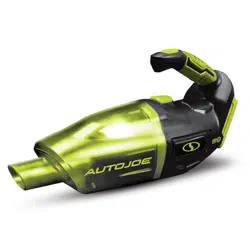Loading ...
Loading ...

mCAUTION! To reduce the risk of injury,
use only ocial 24V iON+ designated chargers
and battery packs. The use of other batteries or
chargers poses a risk of re, personal injury and
damage.
mWARNING! Do not use a battery pack
or product that has been damaged or modied.
Damaged or modied batteries may exhibit
unpredictable behavior resulting in re, explosion
or risk of injury.
Do not modify or attempt to repair the product
or the battery pack except as indicated in the
instructions for use and care. Do not wire a
battery pack to a power supply or car cigarette
lighter, as such misuse will permanently disable
or damage the battery pack.
Have your battery pack serviced by a qualied
repair person using only identical replacement
parts. This will ensure that the safety of the
battery pack is maintained.
mWARNING! To reduce the risk of
electric shock, always unplug the charger before
performing any cleaning or maintenance. Do
not allow water to come into contact with the
charger. Do not handle any part of the charger
with wet hands. Use a Ground Fault Circuit
Interrupter (GFCI) to reduce the risk of electric
shock.
• Remove battery – Remove the battery
pack from the vacuum when not in
use, before changing nozzles, or before
performing any other maintenance task
to reduce the risk of accidental starting.
Never leave the vacuum unattended while
switched on. In the event of an accident
or breakdown, switch o the vacuum
immediately.
• Avoid dangerous environments – Do not
charge the battery pack in rain, snow or
in damp or wet locations. Do not use the
battery pack or charger in the presence of
explosive atmospheres (gaseous fumes,
dust or ammable materials) because
sparks may be generated when inserting
or removing the battery pack, which could
lead to a re.
• Charging – Charging improperly may
damage the battery and increase the risk
of re. Follow all charging instructions and
do not charge the battery pack or appliance
outside of the temperature range specied
below.
NOTE: The safe temperature range for the
battery is 41°F (5°C) to 105°F (40.5°C).
• Charge in a well-ventilated area –
Do not allow smoking or open ames near
a charging battery pack. Vented gases may
explode.
• Maintain charger cord – When unplugging
the charger, pull the plug, not the cord from
the receptacle to reduce the risk of damage
to the power cord. Never carry the charger
by its cord. Keep the cord away from heat,
oil and sharp edges. Make sure the cord
will not be stepped on, tripped over or
subjected to damage or stress when the
charger is in use. Do not use a charger
with a damaged cord or plug. Replace a
damaged charger immediately.
• Do not use an extension cord unless it is
absolutely necessary – Using the wrong,
damaged or improperly wired extension
cord poses a risk of re and electric shock.
If an extension cord must be used, plug the
charger into a properly wired 16 gauge or
larger extension cord with the female plug
matching the male plug on the charger.
Make sure that the extension cord is in
good electrical condition.
• Do not burn battery packs – Do not
expose the device to re or excessive
temperatures. Exposure to re or
temperatures above 265°F (130°C) may
cause an explosion. Toxic fumes and
materials are created when battery packs
are burned.
• Do not crush, drop or damage battery
packs – Do not use the battery pack or
charger if they have sustained a sharp
blow, been dropped from a height of more
than 3 feet (1 meter), run over or have
been damaged in any way. Even if the
housing of the battery pack appears to be
undamaged, the battery cells inside the
battery may have suered serious damage.
In such instances, please read the waste
disposal information for proper battery
disposal.
• Do not disassemble – Incorrect
reassembly may pose a serious risk of
electric shock, re or exposure to toxic
battery chemicals.
3
Loading ...
Loading ...
Loading ...
